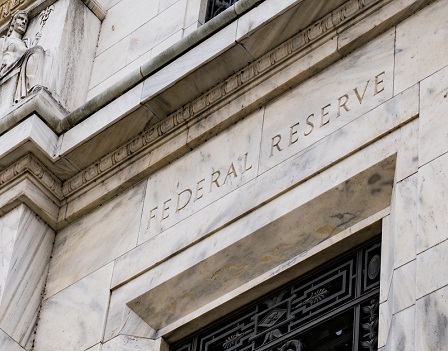
One of the most powerful institutions in the United States is the U.S. Federal Reserve (Fed). The Fed is tasked with a dual mandate: 1) maximum employment and 2) price stability, or keeping inflation in check. One of the key functions of the Fed is to monitor and control monetary policy. The Fed controls how big the money supply is, how much money is in the economy, and sets the interest rate at which banks can borrow from each other or from the Fed itself. Therefore, when the Fed changes course on monetary policy, it garners a lot of attention.
The Fed in November made a change to its current quantitative easing (QE) policy. QE is another monetary policy tool in which the Fed purchases longer-term securities in the open market to increase the money supply and encourage lending and investment.
Why was QE implemented in the first place? The Coronavirus crisis in the United States triggered a deep economic downturn that started in March of 2020. The Fed stepped in with QE to limit the economic damage from the pandemic. More specifically, QE is designed to lift asset prices to spur consumer confidence to create economic growth.
In layman’s terms, QE helps the economy by reducing long-term interest rates (making business and mortgage borrowing cheaper) and by signaling the Fed’s intention to keep using monetary policy to support the economy. The Fed turns to QE when short-term interest rates fall nearly to zero, and the economy still needs additional monetary support.
The Fed implemented QE by buying bonds in the amount of $120 billion per month (roughly $80 billion of U.S. Treasuries and $40 billion of residential and commercial mortgage bonds). Buying these securities added new money to the economy and served to lower interest rates by bidding up fixed-income securities (bonds prices and yields move inversely). Today, the economy is in much better shape and QE has run its course. As a result, the Fed is starting to taper its bond-buying program.
Fed Starts to Taper
Tapering refers to the policy of slowing the massive purchases of Treasuries and mortgage-backed securities adopted by the Fed since the outbreak of COVID-19. Since the pandemic hit, the Fed has added $4.5 trillion to its balance sheet in bond purchases. On November 3rd, Chairman Jerome Powell announced that the Fed’s monthly purchases would decline by $15 billion per month starting in December, with further reductions leading to an eventual goal of zero net additions to the Fed’s bond portfolio by mid-2022. However, at its December 15th meeting, the Fed decided to speed up the reduction of its tapering program and reduce bond purchases by $30 billion per month starting in January 2022. At this pace, Fed tapering would end in March of next year.
This begs the question, why is the Fed tapering now and why the accelerated pace? Growing concerns that rising inflation could harm the economy are likely a big part of what led the Fed to change its policy. The Labor Department’s Consumer Price Index (CPI) soared to 6.8% in November on a year-over-year basis. This is the highest reading since 1982. In his December 15th comments, Jerome Powell indicated they are phasing out its purchases more rapidly because, with elevated inflation pressures and a rapidly strengthening labor market, the economy no longer needs increasing amounts of policy support.
Making Sense of Monetary Policy
Key takeaway; tapering does not mean tightening. Remember, even when it’s tapering, the Fed is still buying bonds and increasing the money supply; it’s just doing so at a slower rate. Therefore, less additional easing, not tightening. It’s quite likely that since the stock market and risk assets broadly have been clearly supported now for over a decade by the Fed’s easy monetary policy, it’s turning into a little bit rougher waters … as we move into tapering and ultimately raising interest rates.
The massive amounts of monetary and fiscal stimulus (i.e., stimulus checks) since the pandemic began have certainly provided a backstop for the economy and the markets. So, will the Fed’s course change on monetary policy undermine the economy and the stock market? That is to be seen. However, this is the first step before the Fed does raise interest rates.
Summary
The Fed is in a difficult position. One of the biggest risks to markets next year is the inevitable drop in money supply growth as the Fed exits QE and ultimately hikes interest rates. It runs the risk of raising interest rates too soon and/or too quickly. A policy mistake could cause an economic slowdown or a recession. If it moves too slowly, then inflation could be a persistent problem causing a drag on the consumer and the economy. Clearly, the Fed needs to dock the ship smoothly and get both the timing and magnitude of its interest rate policy correct.
How will tapering and rising interest rates affect the markets? Do not be surprised if there is an uptick in volatility for the riskier segments of the market. Over the past year, QE has provided an incentive for investors to take on more risk, and as asset purchases come to an end, it could spook the riskier segments of the market. There have been 13 separate hiking cycles since 1955, which lasted an average of under two years. The research indicates solid growth in the price performance of the S&P 500 in the first year of the hiking cycle.
The Fed’s new course clearly requires close monitoring as we transition from an accommodative to a tighter monetary policy environment. However, major changes to portfolio asset allocation do not currently appear necessary. As we have discussed before, we remain focused on helping our clients achieve their goals. We are long-term investors, and we don’t trade based on our expectation of the impact that Fed policy may have on the market. If you’d like to discuss Fed policy or your plan in more detail, our wealth team would be happy to help.


